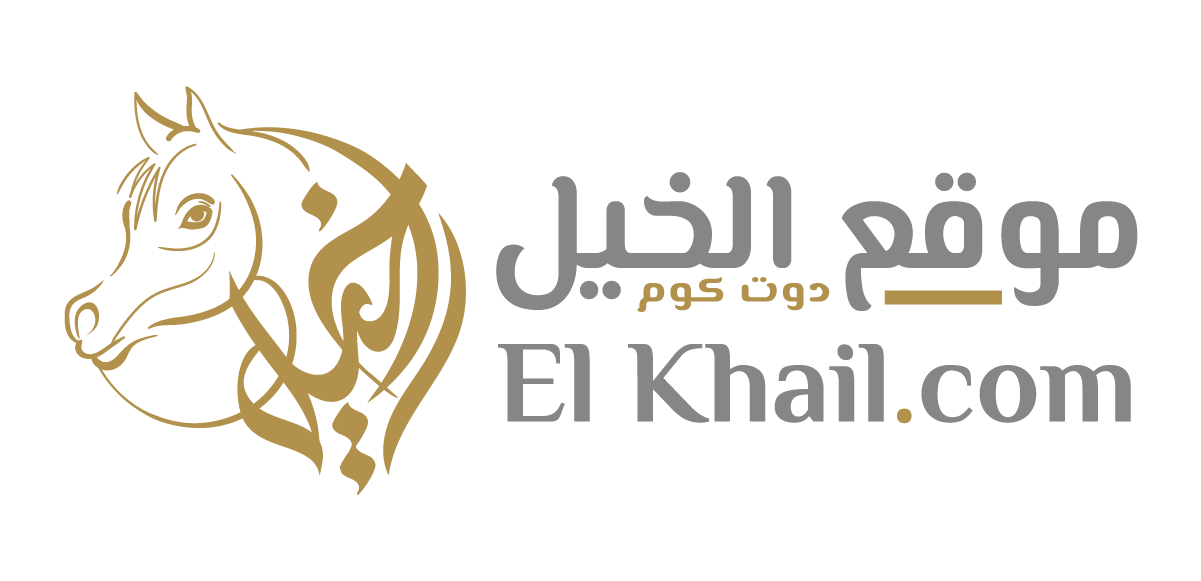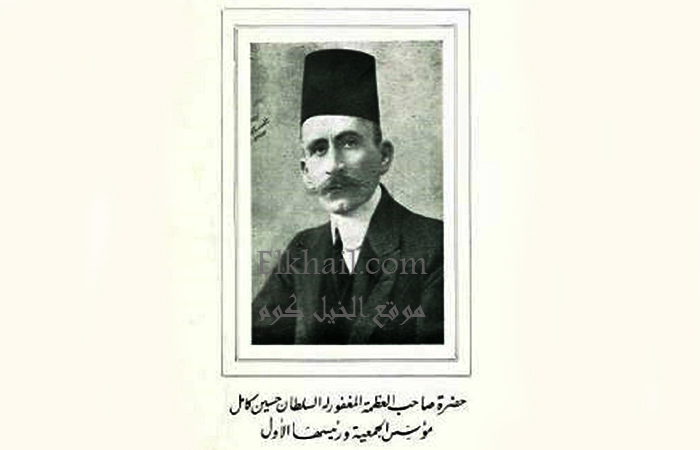Talking about Sultan Hussein Kamel and his relationship to purebred horse breeding is always linked to highlighting his great works that confirmed Egypt’s leading position, and established it in the field of thoroughbred horse breeding, care and care.
The credit for the establishment of the Royal Agricultural Society goes to His Highness Prince Hussein Kamel, who assumed the presidency of the Society from the first meeting on March 30, 1898 to December 19, 1914, until he assumed the throne of the Egyptian Sultanate.
Prince Hussein Kamal also gave great attention to horses, as horse breeding began in the Agricultural Society during his reign.

Prince Muhammad Ali Tawfiq said about him in his book “Arab Horse Breeding in Egypt”: His Royal Highness Sultan Hussein Kamel made Egypt return to its leadership in the field of horses, following the first ancestor of his ancestors.
Prince Muhammad Ali Tawfiq added: I should mention that my cousin, His Highness the Sultanate Prince Kamal al-Din Hussein, in his capacity as President of the Royal Agricultural Society of Egypt, spared no effort in raising horses; Therefore, we can be proud that there is no country comparable to Egypt in the acquisition of horses, whether in number, type or offspring.
Sultan Hussein Kamel Abu Al Falah establishes the Royal Agricultural Society.. and preserves the horse lineage
Sultan Hussein Kamel was known as “Abu al-Falah”, as during the reigns of the emirate and the Sultanate, he was the most emir of the royal house who loved the farmer, took care of his affairs, and watched over his interests.
During the reign of his father, Ismail, he inspected the northern and southern provinces, as well as the supervisor of knowledge, the field of works, the field of military affairs, the head of finance, and the presidency of the Parliament.
Thus, he was able to become familiar with the work of the entire government, and he was the only prince who fluctuated in the various positions of the ministry, and he had a praiseworthy influence in each of them.
He established the Royal Agricultural Society, which provides the Egyptian farmer with the most important services, and established the two departments of animal husbandry and flower breeding, held exhibitions, took care of the agricultural union project, and was connected to the great farmers and their notables, and he was very sympathetic to his small farmers, until he knew them one by one.
He also established a number of schools at his expense to educate the children of the poor, the most important of which was the Damanhour Industrial School, which he stood on from his private land.
Sultan Hussein Kamel had two wives:
The first: Princess Ain Al-Hayat Ahmed, who is the daughter of Prince Ahmed Refaat Pasha, from his wife, Princess Dilbar Jahan Qaden.
She was born on the fifth of October 1858 AD corresponding to the twenty-fifth of Safar 1275 AH.
Sultan Hussein married her on January 15, 1873, then divorced her in 1885, and she died on August 12, 1910.
And his children, including:
o Prince Kamal El-Din was born on the 11th of Dhul-Qa’dah 1291 = December 20, 1874.
o Princess Kazma, born on 24 Jumada II 1293 = 19 July 1879.
o Princess Kamila, born on Shawwal 4, 1294 = October 12, 1877.
o Prince Ahmed Kazim, born on the 28th of Rabi’ al-Akhir in 1296 = 21 April 1897.
And the letter “Al-Kaf” printed their names with a special character: the father was “Kamil”, his two sons were “Kamal al-Din” and “Kazim” and his two daughters were “Kazima” and “Kamila”.
The second: Sultana Malik Jeshem Affet, has a waqf in the center of Mahalla al-Kubra, with an area of 1,214 acres. It was issued on April 13, 1916.
They have been given:
o Princess Qadriya: She was born on January 10, 1888.
o Princess Samiha: She was born on July 17, 1889.






